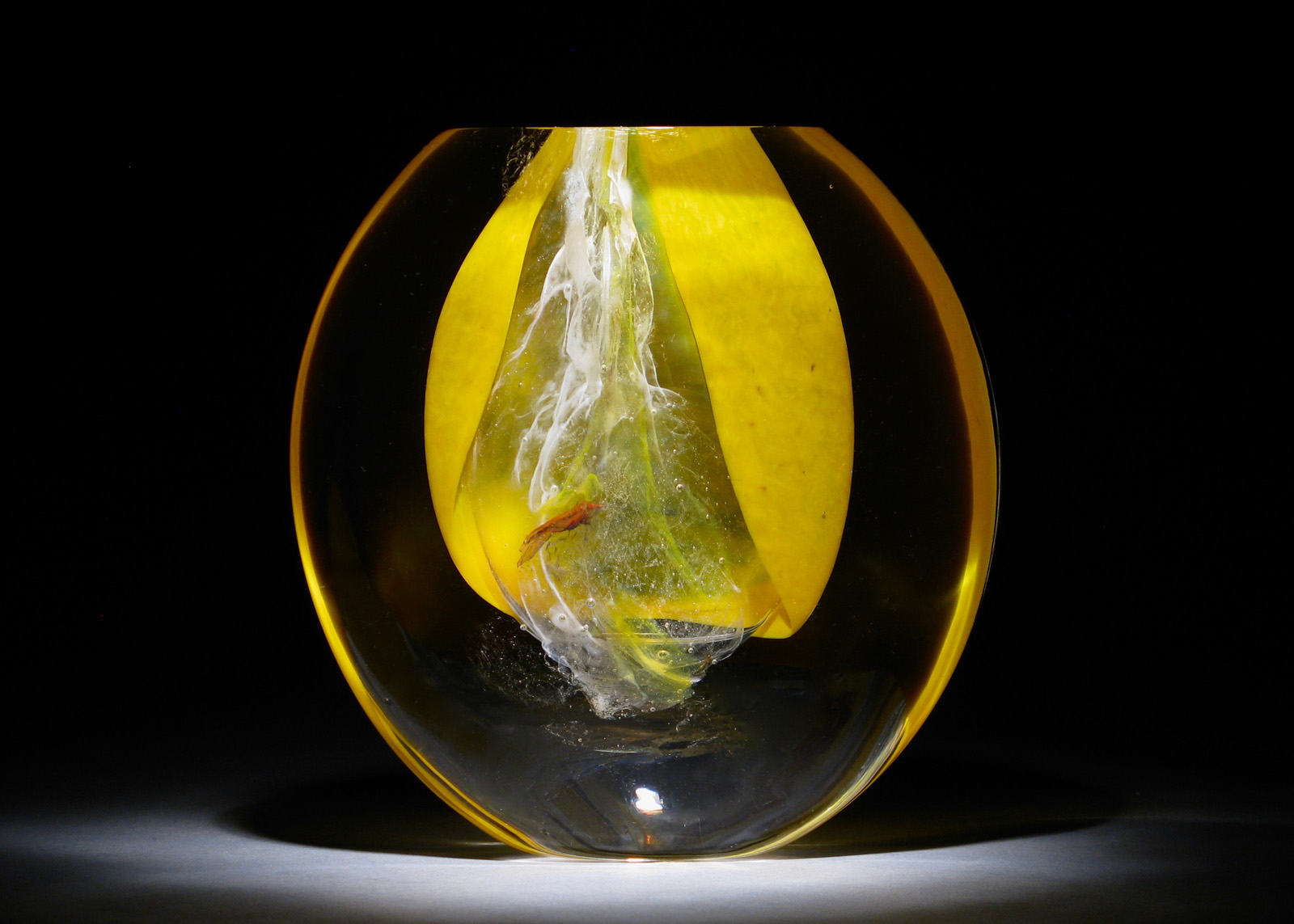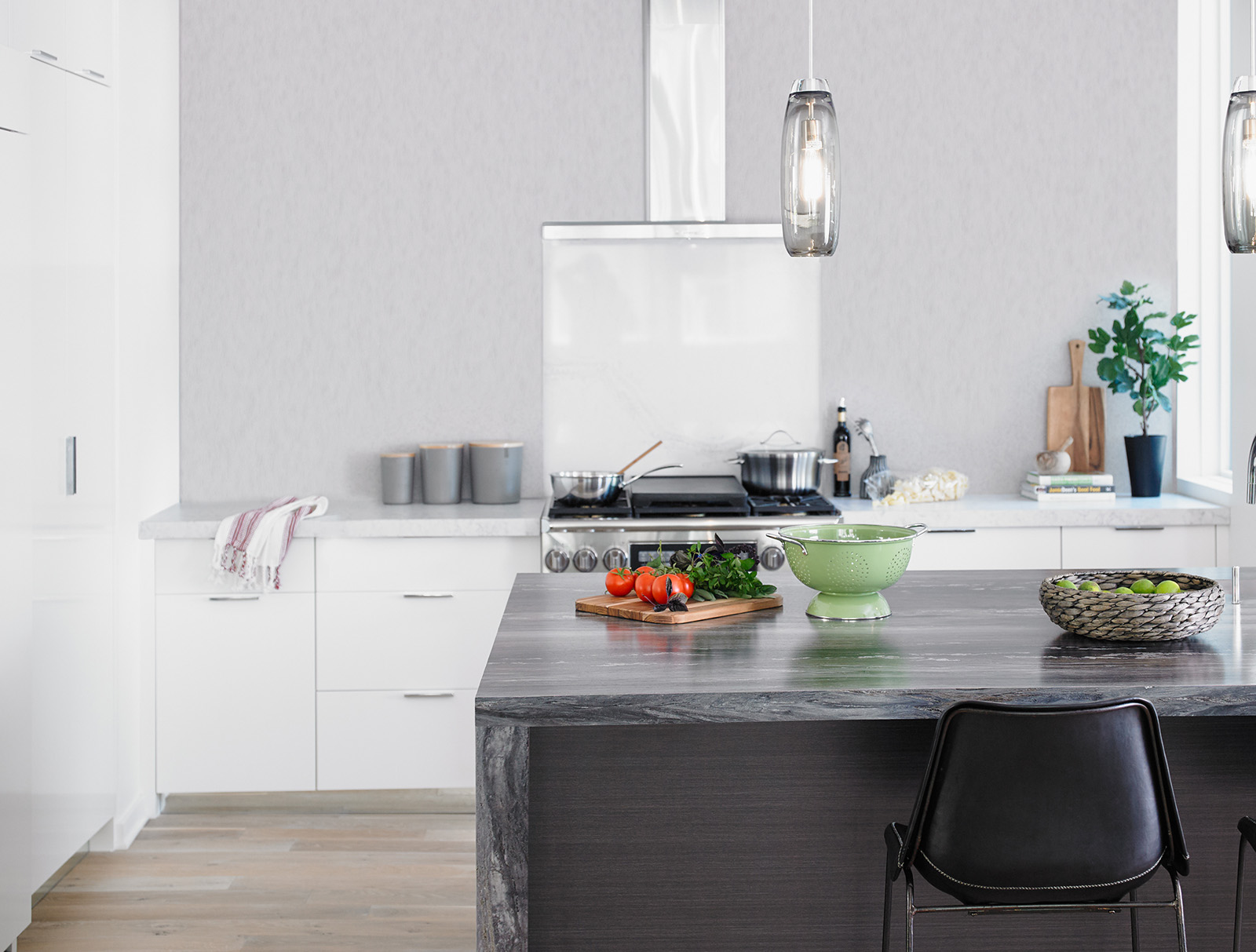In what appears to be a barn nestled into the woods in Quebec’s Eastern Townships, glass artist Maryse Chartrand hunkers down to begin the painstaking task of polishing and repolishing her latest piece, a gorgeous glass sculpture featuring the rich colours and serpentine lines that characterize her Newly Freed collection.

Looking at the bare trees and the snow sparkling outside the window of her Sutton workshop, Chartrand feels the serenity she is trying to convey through her latest work. At first glance, it seems like an easy sentiment for an artist working in the country, in a rustic studio alongside her long-time boyfriend.
Easy, however, is not the name of the road that brought Chartrand to her life as a successful artist. At age 55, she is actually on her third career, her second partner and love, and her first time living outside an urban area.

“At first, I thought that being a glass artist was about aesthetics,” Chartrand says. “But then I realized that my work really expresses my innermost quest, that it’s about being serene and at peace.”
For more than 20 years, Chartrand worked in advertising and communications, slogging it out as a French copywriter while she and her husband, Samuel Beaudry, raised their three children.
Feeling burned out, they decided in 2003 to take a year-long trip around the world with their children, aged nine, 11, and 13. Chartrand describes the trip – which included stops in Guatemala, New Zealand, Vietnam, India, France, and Italy – as nothing less than spectacular. However, efforts to sell a documentary about it failed, and the couple returned to their demanding jobs.

Everything seemed back to normal until there was a knock at the door in the middle of the night in 2005. A police officer told Chartrand that her husband had killed himself. No, she insisted; he loved life and his children too much to ever harm them this way. But it was true. The news was both devastating and shocking.
“It was incomprehensible,” says Chartrand. “I had to understand what happened to him.”
So began her second career as a documentary filmmaker. She began to explore depression, which led to the successful documentary With and Without You, a second journey for the family that combined footage from their trip with Beaudry with the aftermath of his suicide. This greatly helped Chartrand’s emotional healing.

The next surprise in her life was far more pleasant: she fell in love. Her new love, François Charbonneau, was a structural engineer and craftsman. Talking with him of dreams unfulfilled, Chartrand mentioned a weekend workshop of glassblowing she had done a few years back.
“Molten glass really captivated me,” she says. “I thought that if I was crazy, I’d do the three-year full-time program to learn this craft.”
With Charbonneau’s encouragement, she signed up for the program at Espace Verre in Montreal, the only school in Quebec dedicated to the fired arts. She had no objective of selling her work or being an artist; she just wanted to learn the craft.

The more she immersed herself in glass, the more she became fascinated with it. “Glass is full of complexity and contradictions,” she says. “It is both transparent and opaque, solid but fragile, dense but fluid.”
She considers glass her creative partner. “My artistic statement is really linked to the material I use,” Chartrand explains. “Glass helps me express the mysterious beauty of life.”
Her pieces embrace this wondrous feeling with their fluidity and stunning colours, in the way she achieves the appearance of flowers flowing through her thick glass vases or the way colours are suspended in a heavy clear glass cocoon. Her work doesn’t have straight lines, a reflection of the twists and turns of real life.
She was “discovered” when gallery owner Elena Lee – the first to represent the Studio Glass Movement in Canada – chose her work for an exhibit of emerging glass artists. Chartrand’s work is now sold across the country, some pieces for as much as $1,500. One of her early works, Quiet Strength, resides in the Musée national des beaux-arts du Québec.

For Chartrand, the road she has journeyed, the new life she has created for herself, have been both painful and joyous. She believes her late husband would be thrilled about the direction of her life, as he had a real reverence for art and artists.
“I didn’t expect this,” she says. “Life will bring you things you never expected. Falling in love again, being an artist, moving to the country – this is the beauty of life I’m trying to express through my art.”








